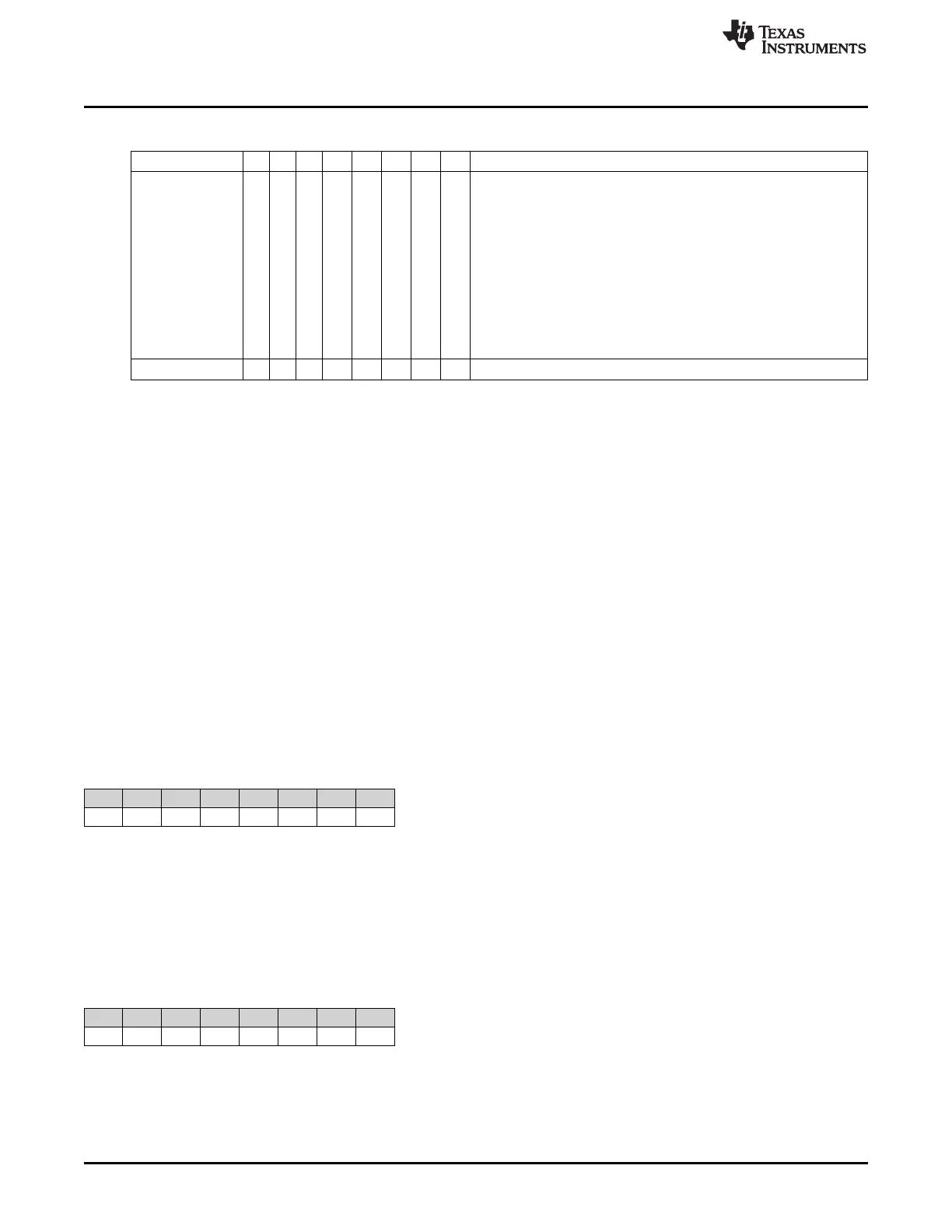Command Strobe/CSMA-CA Processor
www.ti.com
Table 23-4. Instruction Set Summary (continued)
Mnemonic 7 6 5 4 3 2 1 0 Description
ISxxx 1 1 1 0 S3 S2 S1 S0 Execute command strobe S immediately. Send command strobe S to
FFCTRL immediately, bypassing the instructions in the command
buffer. If the current buffer instruction is a strobe, it is delayed. In
addition to the regular command strobes, two additional command
strobes that only apply to the command strobe processor are
supported:
ISSTART: The command strobe processor starts execution at the first
instruction in the command buffer. Do not issue an ISSTART
instruction if the CSP is already running.
ISSTOP: Stops the command strobe processor execution and
invalidates any set label. An IRQ_CSP_STOP interrupt request is
issued.
ISCLEAR 1 1 1 1 1 1 1 1 Clear the CSP program. Reset PC.
23.14.9 Instruction Set Definition
There are 20 basic instruction types. Furthermore, the command-strobe and immediate-strobe instructions
can each be divided into 16 subinstructions, giving an effective number of 42 different instructions. The
following subsections describe each instruction in detail.
Note: the following definitions are used in this section
PC = CSP program counter
X = RF register CSPX
Y = RF register CSPY
Z = RF register CSPZ
T = RF register CSPT
23.14.9.1 DECZ
Function: Decrement Z
Description: The Z register is decremented by 1. An original value of 0x00 underflows to 0xFF.
Operation: Z = Z – 1
Opcode: 0xC5
7 6 5 4 3 2 1 0
1 1 0 0 0 1 0 1
23.14.9.2 DECY
Function: Decrement Y
Description: The Y register is decremented by 1. An original value of 0x00 underflows to 0xFF.
Operation: Y = Y – 1
Opcode: 0xC4
7 6 5 4 3 2 1 0
1 1 0 0 0 1 0 0
23.14.9.3 DECX
254
CC253x Radio SWRU191C–April 2009–Revised January 2012
Submit Documentation Feedback
Copyright © 2009–2012, Texas Instruments Incorporated

